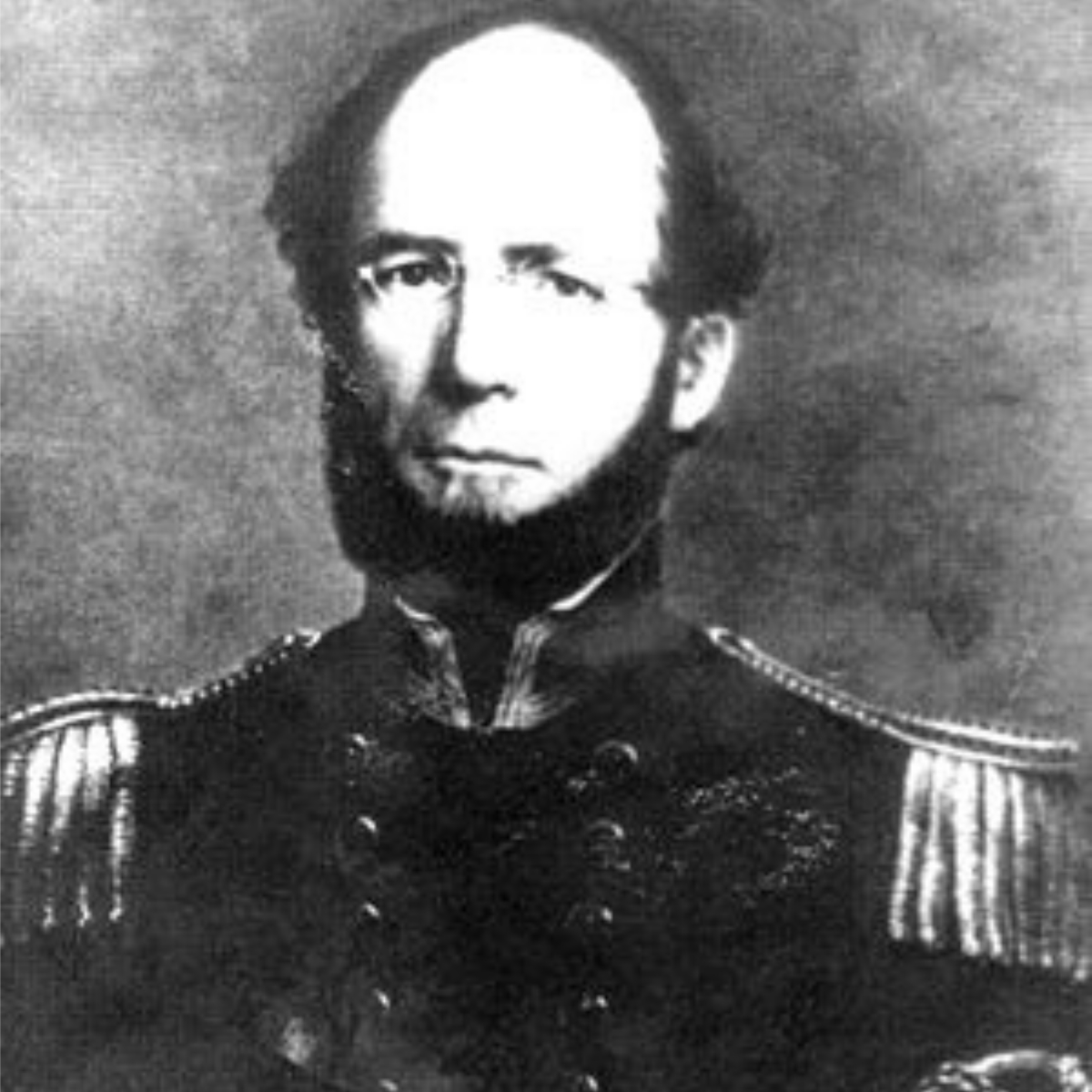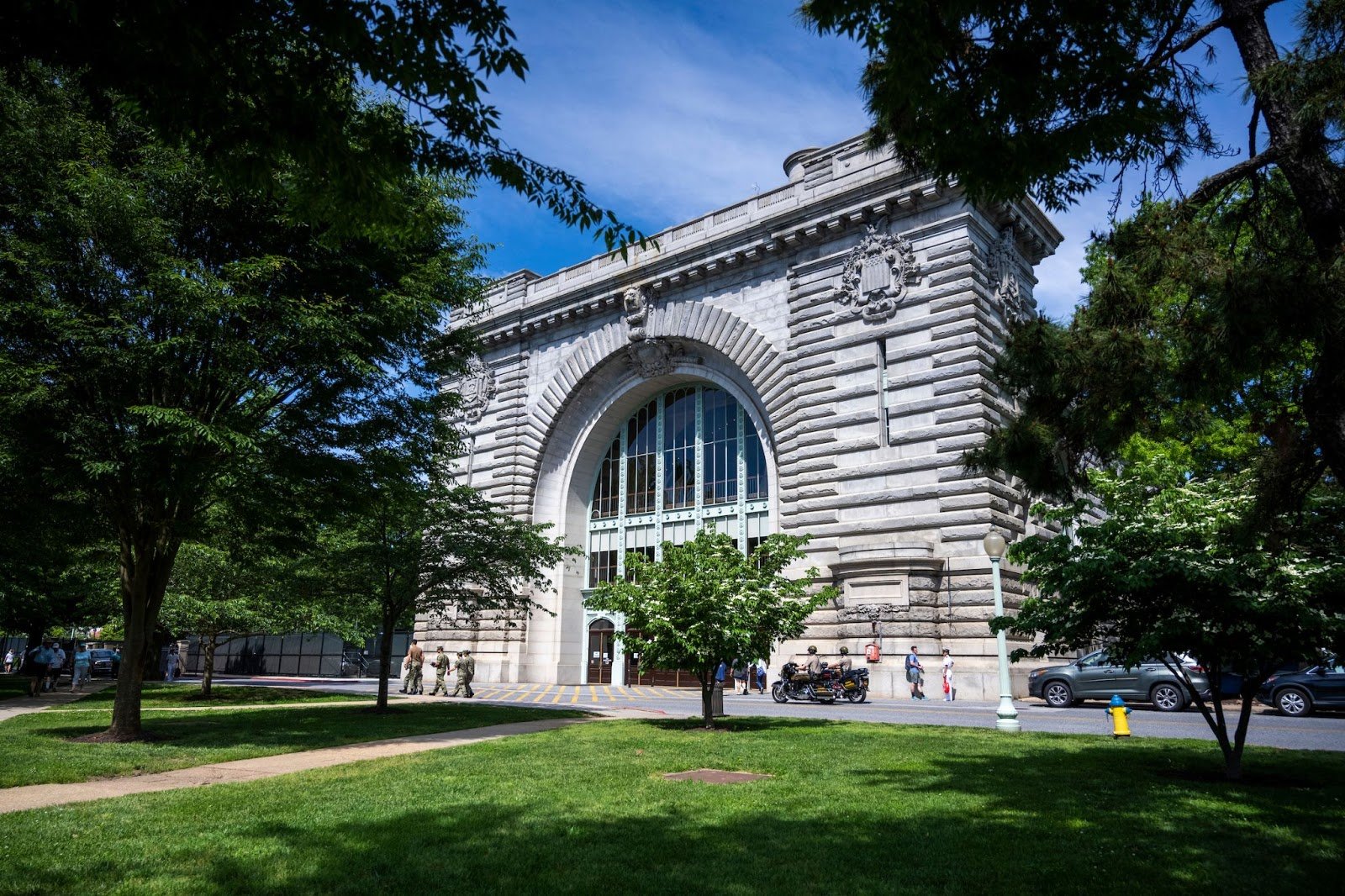
The Yard was built to create leaders. The men and women that train here are our future military leaders, forged by the unending rigor of physical, mental, and moral challenges, trained by some of the best leaders in the country, and called to serve our nation, no matter the circumstances. Over the 175+ years of USNA history, and among the forefathers who brought our modern Naval history to life, there have been countless acts of selfless bravery at sea and beyond, performing missions during war and times of peace.
You’ve likely heard of historical USNA figures and legends like Navy founder John Paul Jones, the father of the Navy, but do you know Commander Herndon’s story?
William Lewis Herndon: Fearless Explorer
Yes, he’s that Herndon. The one that inspired an obelisk that taunts the Plebes every year as they try to ascend its slippery sides to become “Plebes no more.” But before his name was synonymous with this enduring tradition, he was a fifteen-year old boy serving on the USS Guerriere. Two years later, he rose to acting Midshipman, and he was deployed on various sea assignments for years. One such expedition had him exploring the Amazon Valley and furnishing his findings in The Report of the Exploration of the Valley of the Amazon.
Herndon is most known, however, for his last, incredibly heroic act in the Atlantic Ocean off the coast of the Carolinas. He was captaining a ship of civilians aboard the S.S. Central America, a sidewheel steamer known as the “Ship of Gold.” On September 3, 1857, approximately 477 gold-seeking passengers and 101 crew members left Colón, Panama for New York City. On September 9th, they ran into a deadly hurricane off the coast of Cape Hatteras, North Carolina. The ship’s sails were destroyed, she took on water, and her boiler failed. The bilge pumps stopped working, and the paddle wheels failed. The crew inverted their flag as a sign of distress, but a passing ship did not come.
Real Heroism
When you hear about a captain going down with the ship, it sounds incredibly heroic and larger than life. But the personal side often takes your breath away. As the boat took on water, surviving passengers recounted later that Commander Herndon remained calm, assembling a bucket brigade that bailed water throughout the night. He didn’t disguise the danger, and gave orders to save all of the women and children. The passengers heeded his orders and he kept their spirits up, which was crucial to getting them to safety.
Working together, they were able to ferry the ship’s five lifeboats to the brig Marine and another schooner. Commander Herndon would not leave until he could save as many people as possible. One hundred and forty-nine people (including some men) were saved. Amazingly, three passengers were found one week later in a lifeboat. Unfortunately, 423 lives were lost. The ship also lost the 30,000 pounds of gold they had been carrying from the California Gold Rush—approximately $550 million in today’s money. It was a devastating loss—called one of the worst in U.S. navigation disasters—and it set off the “Panic of 1857” in U.S. markets.
The Passengers Remember
In The book Story of an American Tragedy, Survivors’ Accounts of the Sinking of the Steamship Central America, passenger Ann Small recalls, "Capt. Herndon remained self-possessed, calm and firm throughout. I shall forever think of him with gratitude. I am not surprised to hear that he is among the lost, because I knew by his appearance when I parted from him that he would be the last man to leave the ship."
As things became more dire, Herndon asked Theodore Payne, a survivor, to retrieve his gold watch and chain and carry them to his wife. “Said he, ‘Tell her to—’ but this utterance was choked by deep emotion, and he said no more on the subject, but changed it.…” He then gave other orders before “he walked away a few steps and sat down on a bench, with his head to hands, apparently overcome. He remained in that position for a few moments, then arose and resumed giving orders, as the boat from the brig Marine returned."
Matthew Fontaine Maury, USN, wrote a report to the Secretary of the Navy on the sinking of the S.S. Central America. After presenting the facts, he added:
"The law requires every Commander in the Navy to show himself a good example of virtue and patriotism; and never was example more nobly set or beautifully followed. Captain Herndon, by these noble traits which have so endeared his memory to the hearts of his countrymen, and won the respect and admiration of the crew and passengers of that ship in such a degree as to acquire an influence over them that was marvelous in its effects.”
He was a true naval hero.
A Lasting Legacy
In June 1860, the Herndon Monument was erected at the USNA in Commander Herndon’s memory. Not far from his birthplace of Fredericksburg, VA there is a town in Virginia—and also a town in Pennsylvania—that carries his name. Many children born in that era were named Herndon in his honor. Today, Herndon’s story lives on at the Herndon Historical Society in Herndon, VA, as well as in the hearts of the descendants of those whose lives he saved—and all who look on the Herndon Monument in awe.
View the Herndon Monument at the Naval Academy and learn more about his story and the Midshipmen tradition surrounding his honor by taking a tour of the Yard and visiting the museum.




